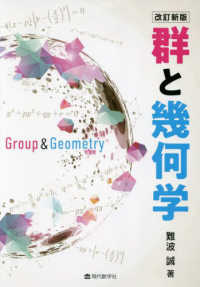- ホーム
- > 洋書
- > ドイツ書
- > Humanities, Arts & Music
- > Music
- > musical equipment
Description
(Text)
Mit Berlin Music schrieb Brett Dean eine dreifache Hommage: an die klassische Duobesetzung aus Violine und Klavier; an die Geigenvirtuosin Midori, für die das Stück entstand; und an die Stadt Berlin, in der er zwischen Mitte der 1980er Jahre und 2000 lebte und deren reichem Kulturleben er viel in seiner Entwicklung als Musiker und Komponist verdankt. Die ersten vier, relativ kurzen Sätze des fünfsätzigen Werkes bilden eine Suite von Charakterstücken, denen ein längerer Schlusssatz folgt. Dieser entpuppt sich resümierend als eigentlicher "Hauptsatz", aus dem alle Motive und Harmonien komponierend hervorgegangen sind. Hierzu zählt das Herunterstimmen der G-Seite um einen Ganzton - ein scheinbar kleiner Unterschied, der aber großen Effekt für Klangfarbe und Resonanz des Instruments hat und vorher unmögliche Intervallfolgen plötzlich spielbar macht. Außerdem muss die Geige im dritten Satz (ein "moto perpetuo", in dem Dean sich vor Ravels Violinsonate verneigt) mit Übungsdämpfer spielen, während der Pianist das Instrument wechselt und auf einem durch Pedal abgedämpften, neben dem Konzertflügel aufgestellten Standklavier spielt: So kommt die nervöse Energie enger Hochschulräume zum Ausdruck.Schwierigkeitsgrad: 5
(Table of content)
I. Einleitung - II. Berceuse - III. The Last Practice Room on the Left (Perpetuum mobile - with apologies to M.R.) - IV. The beyonds of mirrors - V. Hauptsatz
(Text)
With Berlin Music, Brett Dean wrote a threefold homage: to the classical duo combination of violin and piano, to the violin virtuoso Midori, for whom the piece was written, and to the city of Berlin, where he lived from the mid-1980s until 2000 and to Berlin's rich cultural life which played an important role in his development as musician and composer. The first four, relatively short movements of the five-movement work form a suite of character pieces that are followed by a lengthier final movement. In fact, this final movement turns out to be the 'main movement' which serves as a wellspring and summary of all motifs and harmonies. This includes the down-tuning of the G side by a whole tone - a seemingly small adjustment, but one that has a significant effect on the sound, colour and resonance of the instrument, suddenly making hitherto impossible interval sequences playable. In addition, in the third movement (a "moto perpetuo" in which Dean doffs his hat to Ravel's Violin Sonata), the violinist is required to play with a practice mute while the pianist changes instruments and plays with a muted practice pedal while seated at an upright piano set up next to the concert grand: the nervous energy emitting from closed university rooms now takes centre stage.Instrumentation:violin and piano








